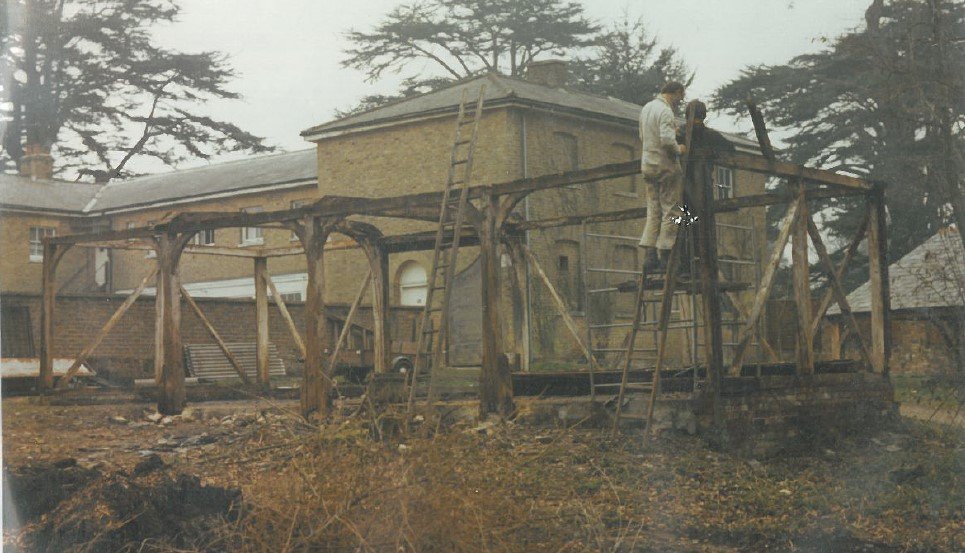A 19th Century Cart Shed
Gorehambury Cart Shed is a structure designed to protect carts and wagons pulled by horses, which were essential for farm work before the advent of tractors. Initially serving this purpose, it later provided shelter for cattle and became a location for splitting logs for fuel. Some of the posts within the shed bear the marks of wear from a cow.
Like lots of other farm buildings, it is made of timber on a brick base. It is clad in wood, with a slate roof topped with curved red clay tiles.
The Origin of Our Cart Shed
Dating back to the 1800s, the cart shed originated from a farm on the Gorhambury Estate near St Albans, Hertfordshire. Originally situated near the house and stables on the estate, it may have been utilised for storing equipment for maintaining the grounds and could have housed various tools in addition to carts and wagons. The name "cart shed" might not capture the full range of its functions, as these buildings often served multiple purposes, accommodating tools and equipment needed seasonally.
Why is the Gorehambury Cart Shed at the Museum?
Gorehambury Cart Shed found its way to the Museum through a generous donation by Lord Verulam, who spared it from demolition. The dismantling of the cart shed took place in March 1984, with volunteers leading the effort. Subsequently, the shed underwent repairs from 1987 to 1989, carried out by three dedicated female volunteers. The re-erection of the cart shed was also accomplished by these volunteers in 1989.
Today, it is used for its original purpose – storing the Museum’s collection of carts and large farm tools.



